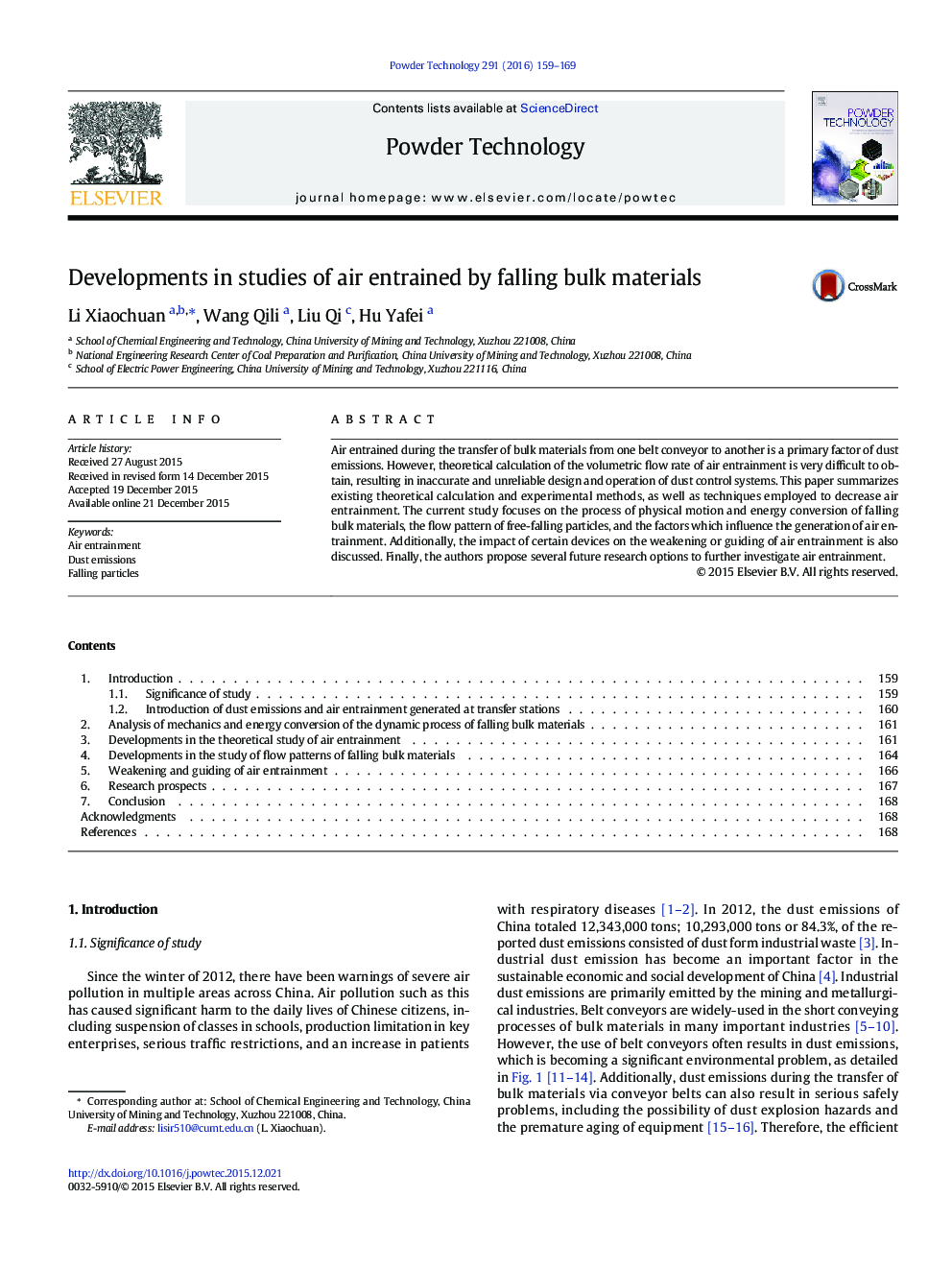| Article ID | Journal | Published Year | Pages | File Type |
|---|---|---|---|---|
| 235039 | Powder Technology | 2016 | 11 Pages |
•This paper summarizes existing theoretical calculation and experimental methods.•Focus on examining the mechanics and energy conversion during the fall of particles.•Focus on the flow pattern of particle materials, and the influencing factors for air entrainment.•This paper offers some options for theoretical studies on air entrainment.
Air entrained during the transfer of bulk materials from one belt conveyor to another is a primary factor of dust emissions. However, theoretical calculation of the volumetric flow rate of air entrainment is very difficult to obtain, resulting in inaccurate and unreliable design and operation of dust control systems. This paper summarizes existing theoretical calculation and experimental methods, as well as techniques employed to decrease air entrainment. The current study focuses on the process of physical motion and energy conversion of falling bulk materials, the flow pattern of free-falling particles, and the factors which influence the generation of air entrainment. Additionally, the impact of certain devices on the weakening or guiding of air entrainment is also discussed. Finally, the authors propose several future research options to further investigate air entrainment.
Graphical abstractFigure optionsDownload full-size imageDownload as PowerPoint slide
